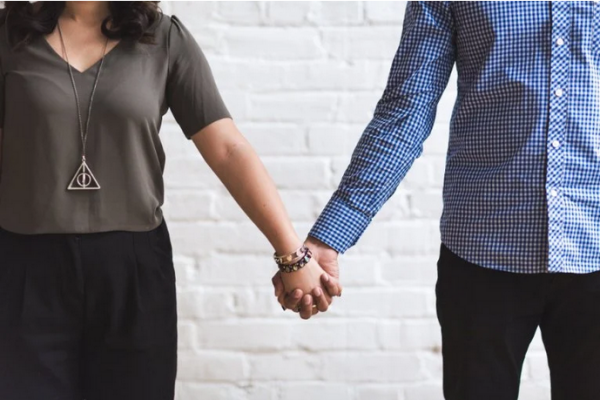2021-01-14

Research into the neuronal basis of emotion processing has so far mostly taken place in the laboratory, i.e. in unrealistic conditions. Bochum-based biopsychologists have now studied couples in more natural conditions. Using electroencephalography (EEG), they recorded the brain activity of romantic couples at home while they cuddled, kissed or talked about happy memories together. The results confirmed the theory that positive emotions are mainly processed in the left half of the brain.
A group led by Dr. Julian Packheiser, Gesa Berretz, Celine Bahr, Lynn Schockenhoff and Professor Sebastian Ocklenburg from the Department of Biopsychology at Ruhr-Universität Bochum describes the results in the journal Scientific Reports, published online on 13 January 2021.
In previous studies on the neuronal correlates of emotion processing, feelings were usually triggered in subjects by presenting certain images or videos in the laboratory. “It was unclear whether that really reflects how people experience and act out feelings,” says Julian Packheiser. “Ultimately, emotions comprise not only the perception of feelings but also their expression.”
Click here to read the report on the "Neuroscience News" page.

Research into the neuronal basis of emotion processing has so far mostly taken place in the laboratory, i.e. in unrealistic conditions. Bochum-based biopsychologists have now studied couples in more natural conditions. Using electroencephalography (EEG), they recorded the brain activity of romantic couples at home while they cuddled, kissed or talked about happy memories together. The results confirmed the theory that positive emotions are mainly processed in the left half of the brain.
A group led by Dr. Julian Packheiser, Gesa Berretz, Celine Bahr, Lynn Schockenhoff and Professor Sebastian Ocklenburg from the Department of Biopsychology at Ruhr-Universität Bochum describes the results in the journal Scientific Reports, published online on 13 January 2021.
In previous studies on the neuronal correlates of emotion processing, feelings were usually triggered in subjects by presenting certain images or videos in the laboratory. “It was unclear whether that really reflects how people experience and act out feelings,” says Julian Packheiser. “Ultimately, emotions comprise not only the perception of feelings but also their expression.”
Click here to read the report on the "Neuroscience News" page.